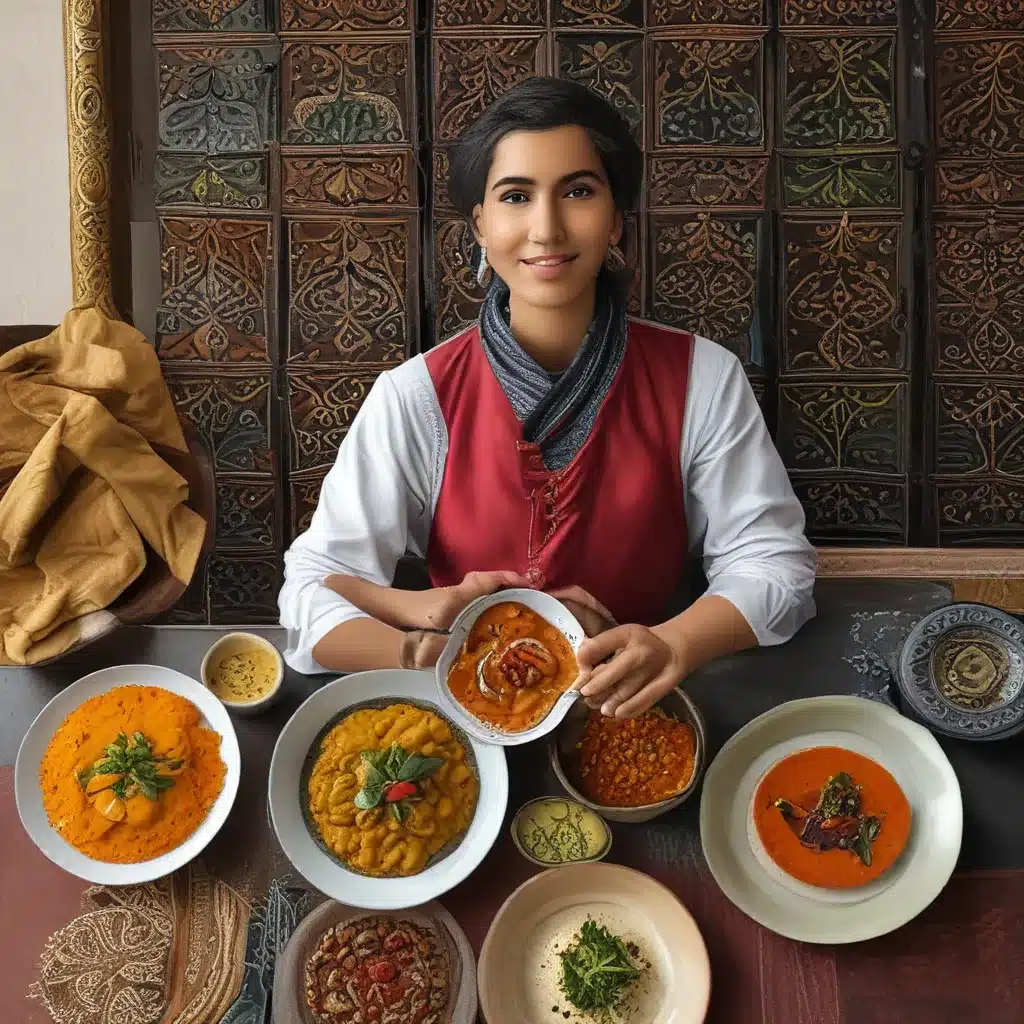
Rediscovering the Flavors of My Roots
I’ll admit, I didn’t grow up with a particularly deep appreciation for Moroccan cuisine. As an Ashkenazi Jew, the rich, fragrant spices and bold flavors of North African fare felt worlds apart from the comforting dishes of my Bubby’s kitchen. But over the years, as I’ve expanded my culinary horizons and immersed myself in the melting pot of cultures that makes New York City’s food scene so vibrant, I’ve come to develop a profound respect and love for the centuries-old traditions of Moroccan cooking.
It all started when I stumbled upon this captivating video showcasing the intricacies of preparing an authentic Moroccan tajine. Watching the host skillfully layer ingredients, ignite the fragrant spices, and coax out the complex, mouthwatering aromas had me utterly captivated. I knew I had to try my hand at reinterpreting these bold flavors in my own kitchen.
Blending Old and New
My first attempt at Moroccan-inspired cooking was a far cry from traditional. Drawing inspiration from my Ashkenazi roots, I decided to take a beloved Jewish dish – gefilte fish – and give it a Moroccan twist. The result, as described in this blog post, was a flavorful fusion of cultures that managed to honor the essence of both cuisines.
Rather than drenching the gefilte fish in a sugary broth, I opted for a spicy, tomato-based sauce spiked with harissa, cumin, and turmeric. The combination of the tender, fluffy fish dumplings and the boldly seasoned sauce created a delightful play of textures and flavors that had my family begging for seconds. Even my Sephardic husband, who had little love for the traditional Ashkenazi gefilte fish, couldn’t get enough of my modern interpretation.
Embracing the Unexpected
As I continued exploring Moroccan cuisine, I found myself drawn to the unexpected ways in which these time-honored dishes could be reinterpreted and reimagined. Take, for example, the classic Moroccan fish stew known as chraime. Rather than sticking to the conventional white fish or salmon, I decided to experiment with using prepared gefilte fish as the base. The result was a unique, yet delicious fusion that combined the comforting familiarity of gefilte fish with the vibrant, spicy flavors of North African cuisine.
But my culinary adventures didn’t stop there. I’ve also tackled Moroccan-inspired fish patties, mixed with unexpected ingredients like chickpeas and harissa, as well as a Moroccan-style fish loaf that seamlessly blends tradition and innovation.
Honoring the Past, Shaping the Future
As much as I’ve enjoyed experimenting with Moroccan flavors and techniques, I never lose sight of the rich cultural heritage that lies at the heart of these dishes. Every time I step into the kitchen, I’m mindful of the generations of Moroccan cooks who have honed these recipes, passed them down, and elevated them to an art form.
That’s why, when I opened El Bahia, my Moroccan restaurant in the heart of New York City, I made it my mission to pay homage to the traditions while also pushing the boundaries of what Moroccan cuisine can be. Whether it’s updating classic tagines with modern twists or creating entirely new dishes that draw inspiration from the flavors of North Africa, I’m constantly seeking ways to honor the past while shaping the future of Moroccan cuisine.
Embracing the Complexity
One of the things I love most about Moroccan food is its sheer complexity. Unlike the more straightforward flavors of Ashkenazi or Sephardic cuisines, Moroccan dishes often feature a harmonious blend of sweet, sour, and savory elements, all elevated by a symphony of aromatic spices.
Take, for example, the classic Moroccan dish of lamb with prunes and almonds. The tender, slow-cooked lamb is perfectly balanced by the sweetness of the dried fruit and the crunch of toasted nuts, all infused with the warm, earthy notes of cinnamon, ginger, and cumin. It’s a flavor profile that is at once familiar and completely captivating, challenging our palates to embrace the unexpected.
Celebrating Diversity
As I’ve delved deeper into the world of Moroccan cuisine, I’ve also been struck by the incredible diversity that exists within this culinary tradition. From the fragrant, saffron-tinged dishes of the north to the fiery, harissa-laced specialties of the south, Moroccan food is a tapestry of regional influences, each with its own unique character and story.
And within that diversity, there’s also a beautiful cross-pollination of cultures, as Moroccan cuisine has been shaped by the country’s long history of trade, migration, and cultural exchange. You can see it in the use of ingredients like couscous, which has its roots in the Berber people, or the influence of Moorish and Andalusian flavors that were brought to Morocco during the Reconquista.
Embracing the Future
As I look towards the future of Moroccan cuisine, both at El Bahia and in my own culinary explorations, I’m filled with a sense of excitement and possibility. There’s so much more to discover, so many more boundaries to push, so many more traditions to honor and reinterpret.
Whether it’s experimenting with novel flavor combinations, incorporating sustainable and seasonal ingredients, or finding innovative ways to present these timeless dishes, I’m committed to keeping Moroccan cuisine alive and vibrant. Because at the end of the day, the true essence of Moroccan food isn’t about rigidly adhering to the past, but rather about embracing the dynamic, ever-evolving nature of this rich culinary heritage.
So, come join me on this journey of rediscovery and reinvention. Let’s celebrate the flavors of Morocco, both old and new, and together, create a future where the boundaries between tradition and innovation are beautifully blurred.


